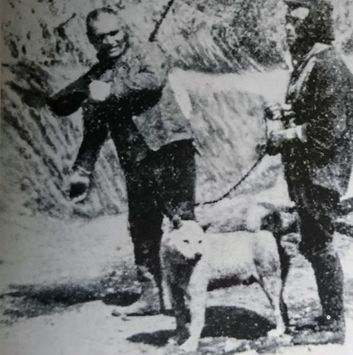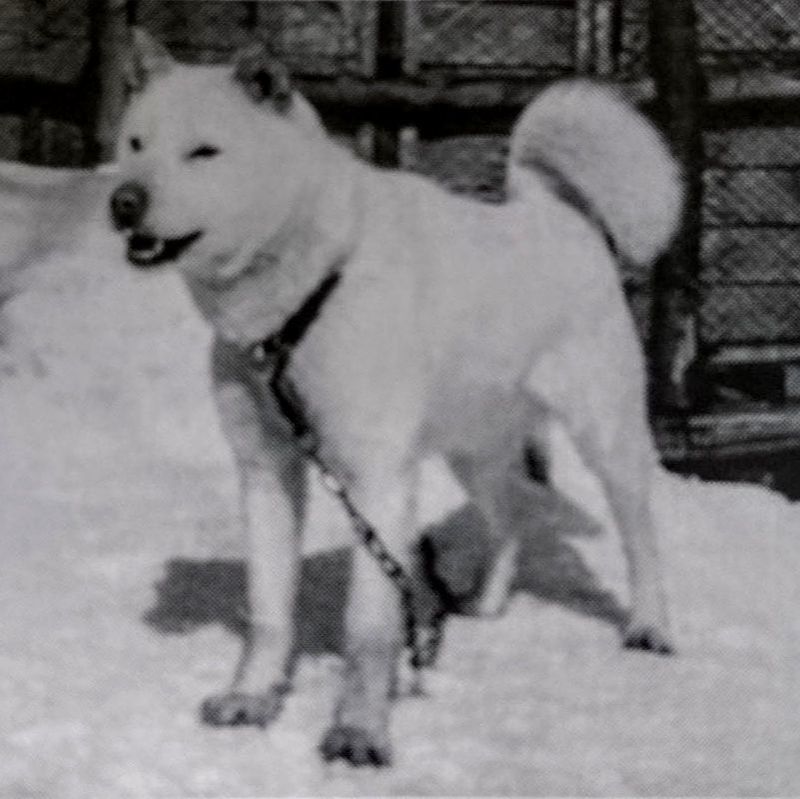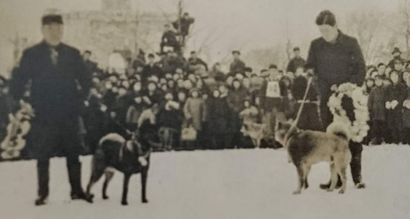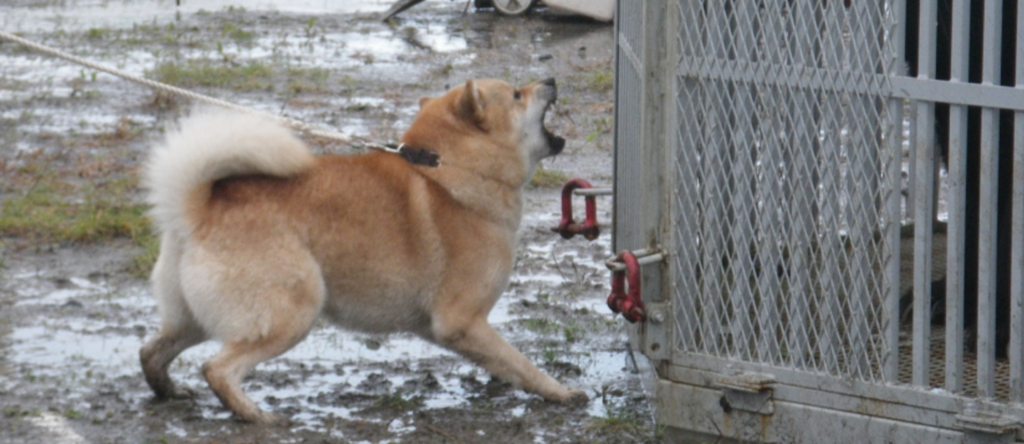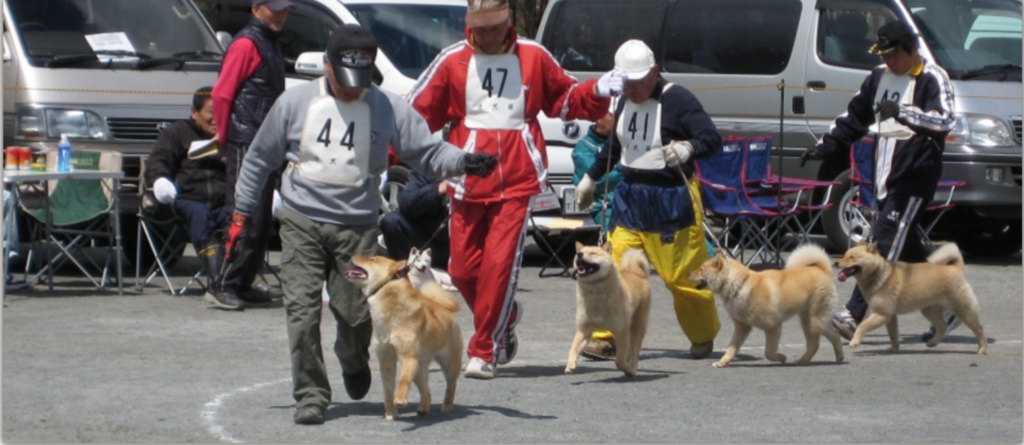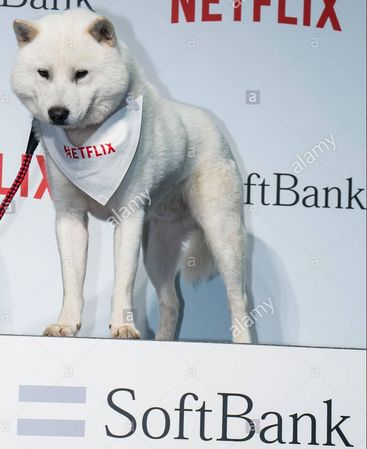The Hokkaido is perhaps the oldest of the six native Japanese spitz breeds with roots dating back nearly 8,000 years ago. Their first recorded history began from 300 AD to 710 AD when the indigenous Ainu people (and subsequently their hunting dogs) were pushed out of the main island of Japan by the Yamato people, and up into the northernmost island of Japan, known as “Hokkaido.” There, the dogs interbred with some of the native Matagi Ken and Jōmon dogs who populated the island.
Over time, the Ainu people and their dogs adapted to survive the severely cold winter climate and rugged Hokkaido landscape. Their dogs developed thick weatherproof coats, large paws, small ears, powerful chests, strong jaws, and robust features. They were revered by the Ainu people for their devout loyalty, bravery, and large game hunting ability. Ainu were bear and deer hunters by culture, and their livelihood depended on their renowned bear dogs. Their dogs were also used to pull sleds and search for army survivors who were caught in deadly snow storms crossing the Hakkoda Mountain range.
When British biologists came to visit Hokkaido in 1869 to study population genetics among the native species on the island, zoologist Thomas Blakiston referred to the native dogs as “Ainu Ken” after the tribes who developed them. “Ainu” meaning “people,” and “Ken” meaning “dog.” This name was used until 1937 when the breed was designated a living natural monument of Japan. At this time, the name was formally changed to “Hokkaido Inu.” However, most native speakers today will refer to the breed as the “Hokkaido Ken” due to a slight grammatical error with the name Hokkaido Inu.
Around this time, Hokkaido also gained Nihon Ken Hozonkai (commonly known as NIPPO) recognition. NIPPO serves as the primary registration service for the six native Japanese spitz breeds: Shiba Inu, Akita Inu, Shikoku Ken, Kishu Ken, Kai Ken, and Hokkaido Ken. Their first dog show was held in November of 1932, followed by biannual shows every fall and spring. However, even after their new recognition with NIPPO, the Hokkaido was always a rare sight at these events.
In 1949, there was a population crisis and the Hokkaido breed risked extinction. This led to the establishment of the Hokkaido Ken Hozonkai (DOKENHO) in February, 1954 to protect and preserve the Hokkaido breed for future generations. Today, the Hokkaido Ken Hozonkai works diligently to maintain the Hokkaido’s natural appearance and superior hunting performance. They hold regular shows geared towards the evaluation of breeding stock compared to the Hokkaido’s written breed standard. DOKENHO also sanctions bear instinct tests to determine the dog’s large game hunting aptitude. There, dogs are shown a live bear (either tethered or caged), and scored on their movement, reaction, and overall hunting drive.
Despite their best efforts, breed numbers continued to dwindle over the next few decades with worldwide population averaging between 10,000 to 12,000 dogs, and yearly registrations totaling at about 5,000 dogs per year, respectively. This began to change in 2007 with the airing of the Japanese telecom company, Softbank’s, commercial series featuring a talking white Hokkaido playing the role of Otōsan. Since then, there’s been a recent popularity spike for the breed not only in Japan, but in Europe and North America as well.
However, it wasn’t enough. In 2017, DOKENHO released news that the Hokkaido is once again in a state of crisis. Hokkaido clubs around the world are working to help bring back this endangered breed and protect & preserve it for future generations.

